Category: Recommended Reading
An Exquisite Biography of a Gilded Age Legend
Megan O’Grady at the New York Times:
 Bright, impetuous and obsessed with beautiful things, Isabella Stewart Gardner led a life out of a Gilded Age novel. Born into a wealthy New York family, she married into an even wealthier Boston one when she wed John Lowell Gardner in 1860, only to be ostracized by her adopted city’s more conservative denizens, who found her self-assurance and penchant for “jollification” a bit much.
Bright, impetuous and obsessed with beautiful things, Isabella Stewart Gardner led a life out of a Gilded Age novel. Born into a wealthy New York family, she married into an even wealthier Boston one when she wed John Lowell Gardner in 1860, only to be ostracized by her adopted city’s more conservative denizens, who found her self-assurance and penchant for “jollification” a bit much.
Belle, as she was known, thought nothing of bringing home lion cubs from the zoo to show off at teatime, or of taking a younger lover. The necklines of her couture dresses were low; her trademark rope of pearls — a gift from her devoted (and long-suffering) husband — hung nearly to her knees. Society columnists struck a tone of derisive admiration: One 1894 profile marveled at Gardner’s magnetism, given that her face was “almost destitute of those lines of beauty” appreciated at the time.
more here.
The Virtue of Slow Writers
Lauren Alwan at The Millions:
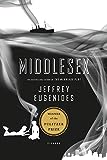 The world can be impatient with slow writers. Nearly a decade after Jeffrey Eugenides published Middlesex, Dwight Garner wrote in The New York Times, “It has been a long, lonely vigil. We’d nearly forgotten he was out there.” Garner’s 2011 article, “Dear Important Novelists: Be Less Like Moses and More Like Howard Cosell,” argues the “long gestation period” among the period’s young writers (Middlesex was written over nine) marks “a desalinating tidal change in the place novelists occupy in our culture.” The writer, hidden away in monkish solitude, is no longer a commentator on events of the moment in the vein of, say, Saul Bellow. Bellow wrote four massive books in 11 years, and in doing so, Garner says, “snatched control, with piratical confidence and a throbbing id, of American literature’s hive mind.” Comparing Eugenides’s books, he notes, “So much time elapses between them that his image in dust-jacket photographs can change alarmingly.” Write slowly and not only do you risk being forgotten, you may no longer be recognizable.
The world can be impatient with slow writers. Nearly a decade after Jeffrey Eugenides published Middlesex, Dwight Garner wrote in The New York Times, “It has been a long, lonely vigil. We’d nearly forgotten he was out there.” Garner’s 2011 article, “Dear Important Novelists: Be Less Like Moses and More Like Howard Cosell,” argues the “long gestation period” among the period’s young writers (Middlesex was written over nine) marks “a desalinating tidal change in the place novelists occupy in our culture.” The writer, hidden away in monkish solitude, is no longer a commentator on events of the moment in the vein of, say, Saul Bellow. Bellow wrote four massive books in 11 years, and in doing so, Garner says, “snatched control, with piratical confidence and a throbbing id, of American literature’s hive mind.” Comparing Eugenides’s books, he notes, “So much time elapses between them that his image in dust-jacket photographs can change alarmingly.” Write slowly and not only do you risk being forgotten, you may no longer be recognizable.
more here.
‘Organising is the best kind of antidepressant’: Astra Taylor and Leah Hunt-Hendrix on solidarity
Amy Fleming in The Guardian:
Leah Hunt-Hendrix and Astra Taylor’s new book, a galvanising examination of the history of solidarity and how we can use it today to shape a fair and sustainable future, was born out of friendship. But the pair are from distinctly different backgrounds. Taylor is a Canadian-born writer, film-maker, musician and activist (the pair prefer the term organiser, more of which later) who grew up in Athens, Georgia. Hunt-Hendrix is an activist, too, as well as a political theory scholar and granddaughter of a Texas oil billionaire. She grew up on Fifth Avenue in Manhattan, spending summers in Dallas.
The two women met at Occupy Wall Street in 2011. They first wrote together in 2015, creating a technology issue for the Nation magazine and, says Hunt-Hendrix, “decided we were great collaborators and that was something we wanted to keep doing”.
They started writing Solidarity during lockdown, but publication was delayed because their original publisher, Verso, was in dispute with its union, so they decided to switch in solidarity with Verso’s workers. As they finally gear up for their book tour, they sit and talk – Taylor, who is visiting family in North Carolina; Hunt-Hendrix at home in New York, a little croaky from the interrupted nights of new motherhood – about what solidarity means to them and why beating polarisation is our only hope.
More here.
Does AI Understand Things?
Civil Society’s Proper Place
Lee Siegel in the Ideas Letter, with a response from Jonas Rolett:
Contrary to the old saw, history never repeats itself as farce. History is too high stakes ever to be considered a farce. Rather, historical trends disintegrate over time into fragments of pastiche.
Consider the recent trend of “The Great Resignation” and “quiet quitting,” which developed in the context of media speculation about a world in which people did not have to work as much, or in an office, or, ideally, at all. “Why should I let the toad work/Squat on my life?” as Philip Larkin put it. It seemed as though the world was on the verge of a revolution in social and economic life similar to the transformations that occurred in the wake of the Second World War, when western European countries evolved into various degrees of social democracy. But that paradigmatic shift occurred as a result of a global economic crash and a world war’s massive devastation, and it was also a concession in the face of the communist threat. “Quiet quitting,” by contrast, was the creation of a bored TikToker playing around online in the most prosperous country on earth. (As for Larkin, he wryly concluded in a letter that “work, paradoxically enough, is a comfort. One wakes up wanting to cut one’s throat; one goes to work, & in 15 minutes one wants to cut someone else’s—complete cure!”)
Or look at the new style of right-wing populist writers, who indignantly beat their chests over corporations’ heedless treatment of workers. Reading them is like being caught in a double warp of time and ideology. The rhetoric dates back to the 1930s radical left, and the political sentiment has existed on the liberal side of things for over a century. Since it is hard to imagine the American political right becoming pro-labor or attempting to diminish the power of corporations, the rhetoric is—leave aside what often feels like a veiled authoritarian purpose behind it— surreal, familiar words whirling unfamiliarly in a bespoke political snow globe. They have no actual place to go.
More here.
Parties and Movements
Sheri Berman, Andre Pagliarini, Zachariah Mampilly and Nick Serpe in Dissent:
For many socialists, the classic political model comes from the left-wing parties grounded in workers’ movements that formed in Europe over a hundred years ago. Today, many of the left’s broadest goals, and its primary antagonists, remain the same. But the conditions under which socialists pursue those goals have changed drastically. And the social and political climate varies greatly across our unequal planet.
This conversation, held in October, brings together scholars who focus on different regions in order to help us understand the challenges that left political formations and popular movements face around the world. What do they hold in common? Where do their perspectives diverge? What brought them to this point—and where are they headed?
Nick Serpe: Let’s start with one story about what’s going on with the left, particularly in the Global North: the development of what Thomas Piketty calls a Brahmin left, against a populist right, in a moment of class dealignment. Sheri, is this story a good framework for thinking about current challenges in Europe?
Sheri Berman: There clearly is a story to tell about how the groups that vote for the left have shifted over the past few decades. People are concerned about right-wing populist parties not only because they are a potential threat to democracy, but also because they have captured a significant share of working-class voters. Piketty has written a lot about how the left these days is often more associated with folks like those who read Dissent— highly educated, middle-class people who are socially liberal and perhaps also economically liberal, but are defined primarily by the former rather than the latter.
More here.
Is Kevin Hart funny?
Travis Andrews in The Washington Post:
He hopes to be a billionaire by the time he turns 45. That’s in July.
“For me, it’s about becoming a mogul, owning my own projects and establishing myself as a funding producer,” Hart told Collider in 2013. “For me, it’s about history,” he said on an episode of “Hot Ones” in 2016. “It’s about making sure that last name Hart means something when it’s all said and done.” “For me, it’s building an empire,” he said to Marc Maron in 2017.
More here.
Why Your Diet Needs More Fermented Pickles
Matt Fuchs in Time:
 Maybe you heard somewhere that pickles are a “superfood,” and dutifully added them to your shopping list. Unfortunately, you may reach for the wrong jar, because many pickles at supermarkets aren’t especially good for you. Scientists have made progress in separating fact from fiction when it comes to health claims about pickles: both the cucumber kind, and other types of pickled vegetables. We asked experts how to find the healthiest kinds of pickles, which benefits are backed by research, and the right amount to eat every day.
Maybe you heard somewhere that pickles are a “superfood,” and dutifully added them to your shopping list. Unfortunately, you may reach for the wrong jar, because many pickles at supermarkets aren’t especially good for you. Scientists have made progress in separating fact from fiction when it comes to health claims about pickles: both the cucumber kind, and other types of pickled vegetables. We asked experts how to find the healthiest kinds of pickles, which benefits are backed by research, and the right amount to eat every day.
…More research is needed, but a few dozen studies have been well designed to compare diets with pickled vegetables to diets with non-pickled versions of the same vegetables, Hutkins says. Most of this research has been conducted in Korea and focuses on kimchi, or pickled cabbage—not pickled cucumbers. But the findings are promising, with fermented vegetables—again, mostly cabbage—linked to significantly better glucose metabolism, lower risk of Type 2 diabetes, a more robust immune system, decreased triglyceride levels, and higher HDL cholesterol (the good kind) in people who ate them.
More here.
Saturday Poem
Crossings -xxxii
Running water never disappointed.
Crossing water always favored something.
Stepping stones were stations of the soul.
A kesh could mean the track some called a causey
Raised above the wetness of the bog.
Or the causey where it bridged old drains and streams.
It steadies me to tell these things. Also
I cannot mention keshes or the ford
Without my father’s shape appearing to me
On a path toward sunset, eyeing spades and clothes
That turfcutters stowed perhaps or souls cast off
Before they crossed the log that spans the burn.
by Seamus Heaney
from Seeing Things
The Noonday Press 1991
Friday, March 22, 2024
The fading memories of youth
Sarah Reardon in Science:
 You might think you remember taking a trip to Disneyland when you were 18 months old, or that time you had chickenpox when you were 2—but you almost certainly don’t. However real they may seem, your earliest treasured memories were probably implanted by seeing photos or hearing your parents’ stories about waiting in line for the spinning teacups. Recalling those manufactured memories again and again consolidated them in your brain, making them as vivid as your last summer vacation.
You might think you remember taking a trip to Disneyland when you were 18 months old, or that time you had chickenpox when you were 2—but you almost certainly don’t. However real they may seem, your earliest treasured memories were probably implanted by seeing photos or hearing your parents’ stories about waiting in line for the spinning teacups. Recalling those manufactured memories again and again consolidated them in your brain, making them as vivid as your last summer vacation.
People generally remember nothing from before age 3, and children’s memory abilities don’t fully mature until about age 7. “It’s a paradox in a sense,” says neuroscientist Flavio Donato of the University of Basel. “In the moment that the brain is learning at a rate it will never show again during the whole lifetime, those memories seem not to stick in the brain.” For many years, researchers assumed babies’ brains are simply not mature enough to form lasting memories. Theories have abounded as to whether this is a biological immaturity or something more psychological, such as a lack of a sense of oneself as an individual or the ability to use language. Sigmund Freud, however, believed infants do form memories, but the brain suppresses them so we forget the psychosexual experience of birth. He called the process “infantile amnesia.”
More here.
The Best of Trevor Noah on Netflix
The Ghost of Gabriel García Márquez
Junot Díaz in the Boston Review:
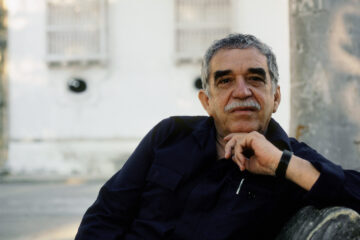 Gabo, as he is affectionately known by his fans, had the kind of impact that only a handful of artists in any century, in any genre, have ever achieved. No one better dramatized First World realism’s inability to cope with Third World reality (or coloniality’s spectrality) than García Márquez. No one better strategized how those of us hailing from what is euphemistically called the Global South might capture our impossible realities, or meaningfully intervene in imperial struggle between the true and the real.
Gabo, as he is affectionately known by his fans, had the kind of impact that only a handful of artists in any century, in any genre, have ever achieved. No one better dramatized First World realism’s inability to cope with Third World reality (or coloniality’s spectrality) than García Márquez. No one better strategized how those of us hailing from what is euphemistically called the Global South might capture our impossible realities, or meaningfully intervene in imperial struggle between the true and the real.
García Márquez changed art forever, full stop. And what he did for Latin American, for Caribbean writers, is perhaps only slightly less colossal: he opened an artistic door that no force on this planet has been able to shut. I am not alone in believing that I could not have become the writer I am without the spectrums that he brought forth.
More here.
Michel Talagrand of France has credited a brush with blindness for leading to the work that resulted in his recognition by the math equivalent of the Nobel Prize
Kenneth Chang in the New York Times:
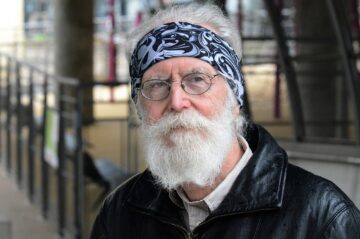 As a 15-year-old, a month in the hospital helped spur his mathematical abilities. A decade earlier, he had gone blind in his right eye after the retina detached, the result of a genetic condition. Then the retina in his left eye detached too. His father, a college math instructor, taught him mathematics while his eyes were bandaged.
As a 15-year-old, a month in the hospital helped spur his mathematical abilities. A decade earlier, he had gone blind in his right eye after the retina detached, the result of a genetic condition. Then the retina in his left eye detached too. His father, a college math instructor, taught him mathematics while his eyes were bandaged.
“This is how I learned the power of abstraction,” Dr. Talagrand wrote in an autobiography for the Shaw Prize.
Up until then, he was an average student. “The trauma made me a different person, in a way that is still mysterious to me,” he wrote. “When I returned to school, I was, at least in math and physics, an excellent student.”
More here.
The Indian Giant Has Arrived
Mohamed A. El-Erian and Nobel-winner Michael Spence at Project Syndicate:
 India’s recent economic success, solid momentum, and promising prospects are making the country ever more influential both regionally and internationally. But the experience of other countries – most notably China over the last three decades – suggests that such rapid influence and robust progress can be tricky to manage. After all, an action that makes sense domestically may conflict with what other countries expect from a systemically important economy. By the same token, actions that make sense internationally could complicate domestic economic progress.
India’s recent economic success, solid momentum, and promising prospects are making the country ever more influential both regionally and internationally. But the experience of other countries – most notably China over the last three decades – suggests that such rapid influence and robust progress can be tricky to manage. After all, an action that makes sense domestically may conflict with what other countries expect from a systemically important economy. By the same token, actions that make sense internationally could complicate domestic economic progress.
Like China, India’s systemic importance has become apparent earlier in its growth and development process than was the case with other emerging economies, primarily because it boasts the world’s largest population (over 1.4 billion). Its growing presence is easy to detect.
More here.
Dame Judi Dench’s Shakespeare Secrets
Friday Poem
Leavings
They sleep in one large room:
Sonia, Tin, Zaida, Hectico, Roly.
And I cut through Peralta’s Backyard
to their tiny apartment, where at night
Hectico and I find our way to the roof
to count the stars.
Zaida is almost fifteen,
and Sonia and I take the bus downtown
every Sunday to collect the discarded ice cream
cups to hold the pasta salad Sonia will make
for her birthday party.
Mother doesn’t think we’ll be able to go
to see her dance in her long, pink dress
as she smiles her way into womanhood.
Aunt Velia has called us to America.
Mother says that means I’ll never again
sit on Sonia’s tar-papered roof,
that Uncle Armando will move into our house,
and we’ll be able to send gum in our letters
like Aunt Velia does now,
that the twins will learn English
before they remember these first
few years.
In dreams Aunt Velia waves,
signaling for us to come,
her tall body wrapped in an airmail
envelope, like a cloak.
Mother waves back, clutching the twins
in her arms, and begs me to hurry,
but I hesitate, knowing Sonia has had
a slow day.
by Sandra M. Castillo
from Paper Dance-55 Latino Poets
Persea Books, New York, 1995
Thursday, March 21, 2024
Paul Tillich’s Subtle Theology
Ted Farris at Aeon Magazine:
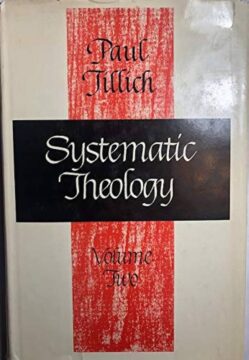 One of the most difficult aspects of Tillich’s thought is the ambiguity that characterises much of his writing. Among the most puzzling and paradoxical ideas in his Systematic Theology (1951) is his statement that ‘God does not exist’ and that ‘to argue that God exists is to deny him.’ Tillich goes on to state that the word ‘existence’ should never be used in conjunction with the word ‘God’. These assertions fit with the idea of God as a symbolic object that is a repository of ultimate concern, but not a being. Tillich scholars have disagreed on the meaning and significance of these passages. Does Tillich mean that, since God is ‘beyond essence and existence’ and exists outside of time and space, God is not part of existence? Or is Tillich implying that God really doesn’t exist and is not required to do anything in the Universe? Certainly, in Tillich’s theology, God is an abstract and somewhat inactive concept. The action all comes from the human side through faith. God is the unreachable object of our ultimate concern. This illustrates some of the difficulties of interpreting Tillich’s intentionally paradoxical and deliberately ambiguous assertions as he tries to avoid discussing the literal nature of God.
One of the most difficult aspects of Tillich’s thought is the ambiguity that characterises much of his writing. Among the most puzzling and paradoxical ideas in his Systematic Theology (1951) is his statement that ‘God does not exist’ and that ‘to argue that God exists is to deny him.’ Tillich goes on to state that the word ‘existence’ should never be used in conjunction with the word ‘God’. These assertions fit with the idea of God as a symbolic object that is a repository of ultimate concern, but not a being. Tillich scholars have disagreed on the meaning and significance of these passages. Does Tillich mean that, since God is ‘beyond essence and existence’ and exists outside of time and space, God is not part of existence? Or is Tillich implying that God really doesn’t exist and is not required to do anything in the Universe? Certainly, in Tillich’s theology, God is an abstract and somewhat inactive concept. The action all comes from the human side through faith. God is the unreachable object of our ultimate concern. This illustrates some of the difficulties of interpreting Tillich’s intentionally paradoxical and deliberately ambiguous assertions as he tries to avoid discussing the literal nature of God.
more here.
A Dialogue with Carl Rogers and Paul Tillich
The Last Crimes Of Caravaggio
Michael Prodger at the New Statesman:
 In May 1606, Caravaggio’s rackety life caught up with him. He already had a long list of misdemeanours against his name. He had been twice arrested for carrying a sword without a permit; put on trial by the Roman authorities for writing scurrilous verses about a rival, Giovanni Baglione (or “Johnny Bollocks” according to the poems); arrested for affray and assault, in one incident being injured himself (his testimony to the police survives: “I wounded myself with my own sword when I fell down these stairs. I don’t know where it was and there was no one else there”); arrested again for smashing a plate of artichokes in the face of a waiter; for throwing stones and abusing a constable (telling him he could “stick [his sword] up his arse”); and for smearing excrement on the house of the landlady who had had his belongings seized in payment of missed rent. There were more incidents, all meticulously recorded in the Roman archives.
In May 1606, Caravaggio’s rackety life caught up with him. He already had a long list of misdemeanours against his name. He had been twice arrested for carrying a sword without a permit; put on trial by the Roman authorities for writing scurrilous verses about a rival, Giovanni Baglione (or “Johnny Bollocks” according to the poems); arrested for affray and assault, in one incident being injured himself (his testimony to the police survives: “I wounded myself with my own sword when I fell down these stairs. I don’t know where it was and there was no one else there”); arrested again for smashing a plate of artichokes in the face of a waiter; for throwing stones and abusing a constable (telling him he could “stick [his sword] up his arse”); and for smearing excrement on the house of the landlady who had had his belongings seized in payment of missed rent. There were more incidents, all meticulously recorded in the Roman archives.
more here.

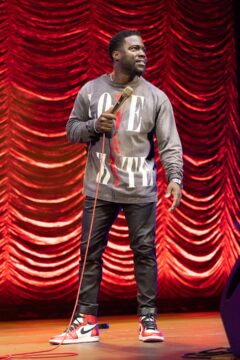 Kevin Hart insists he’s never written a joke.
Kevin Hart insists he’s never written a joke.